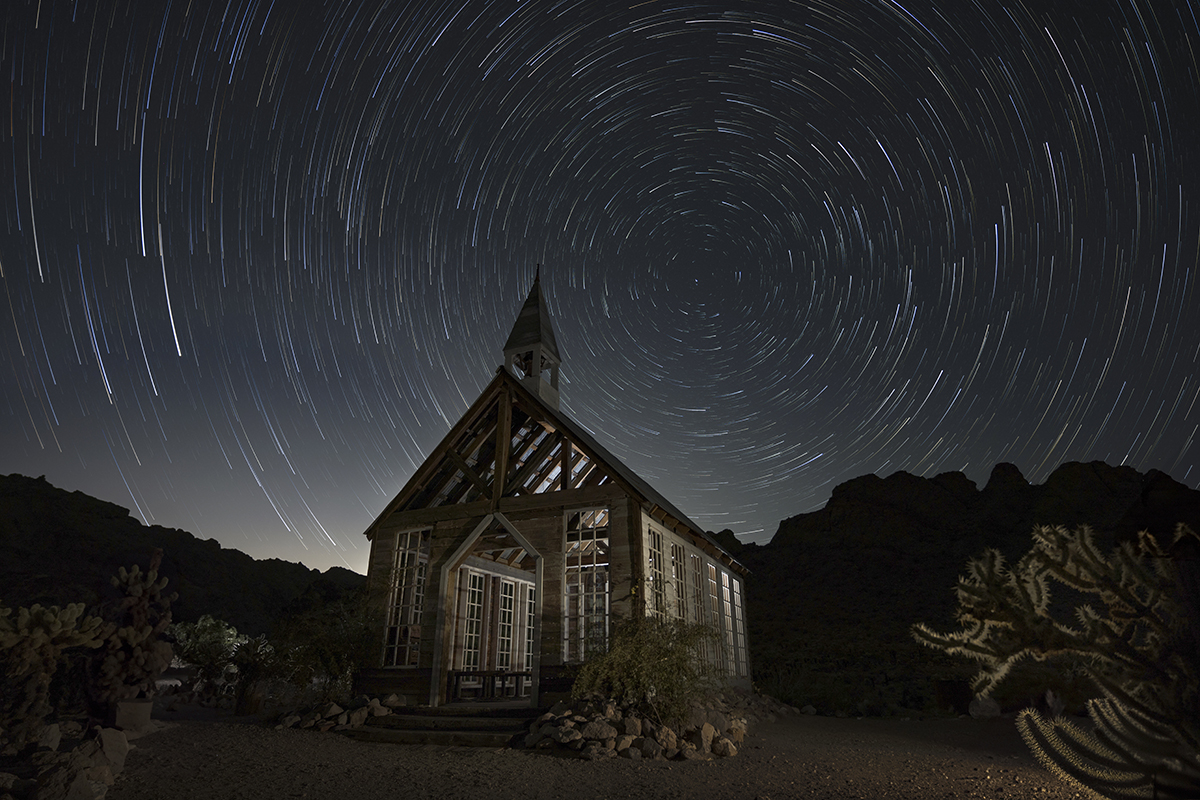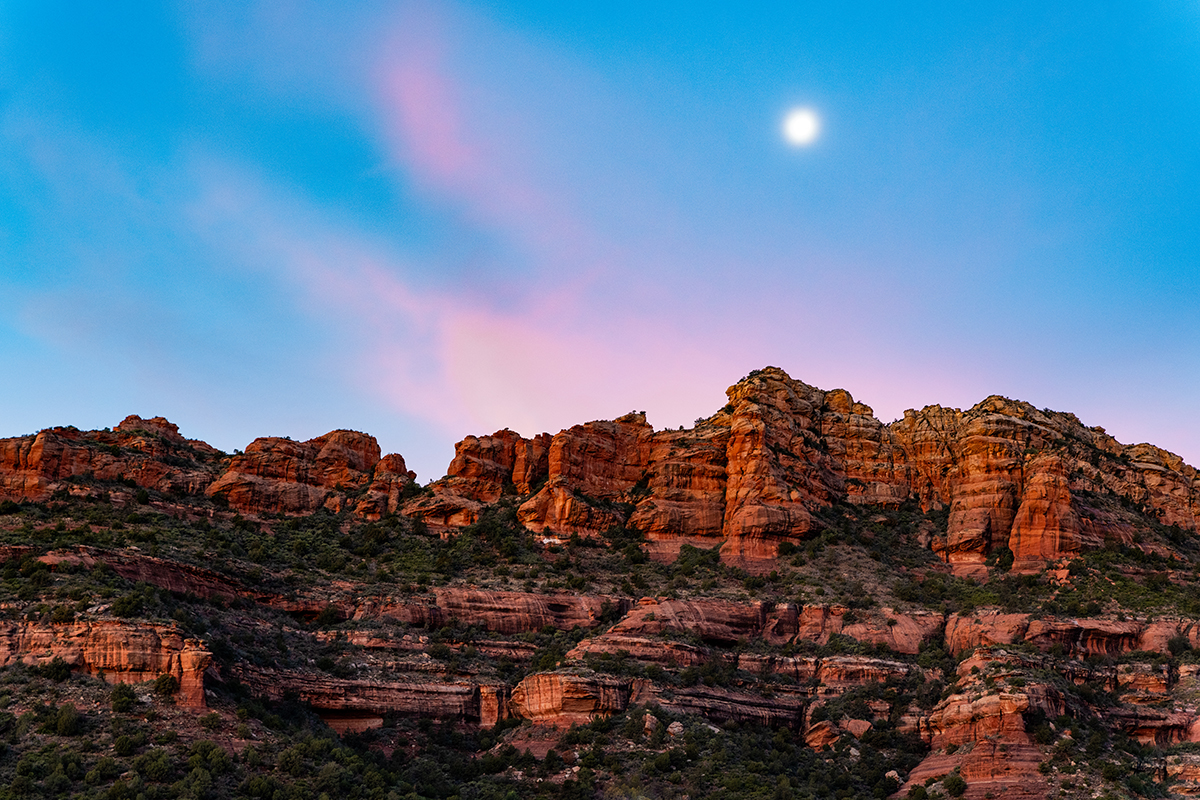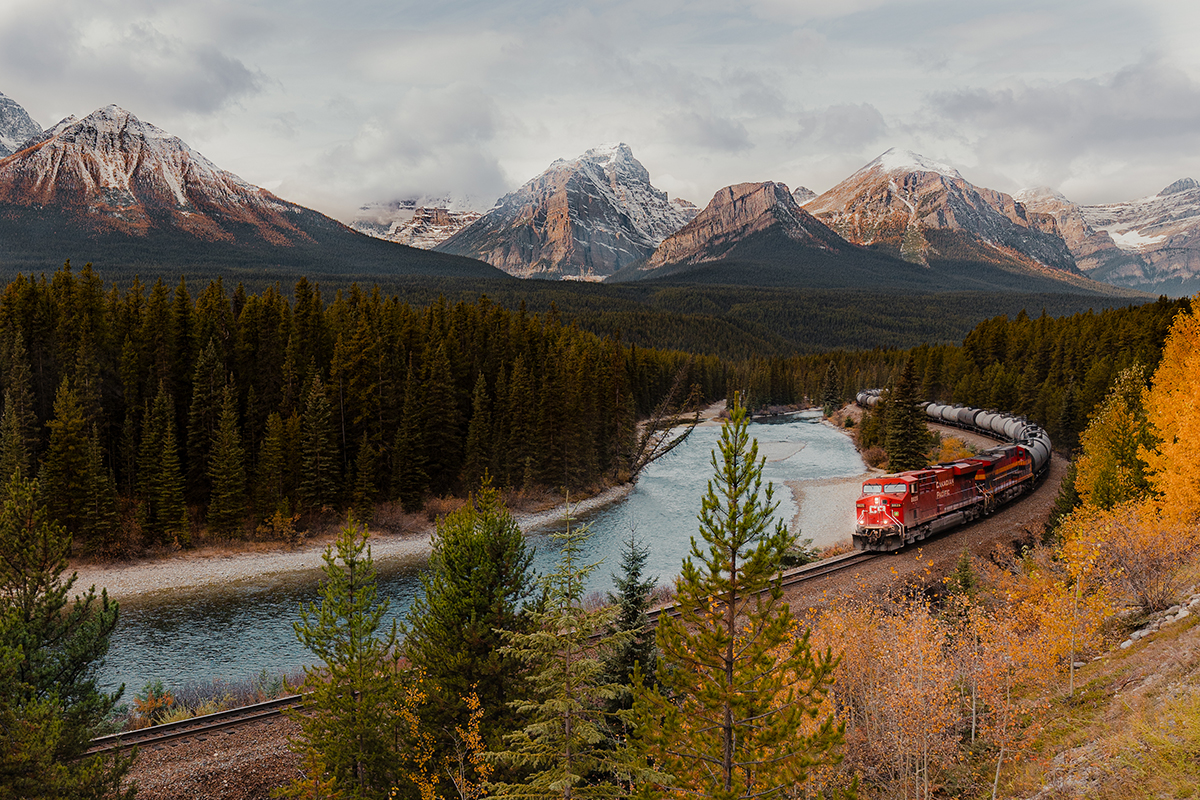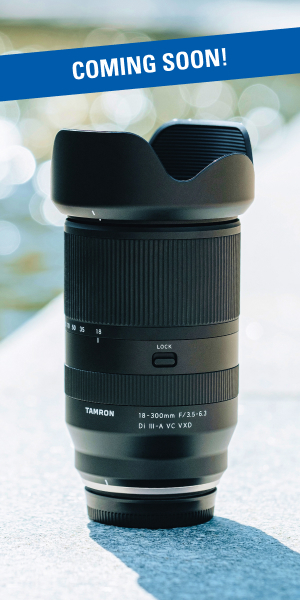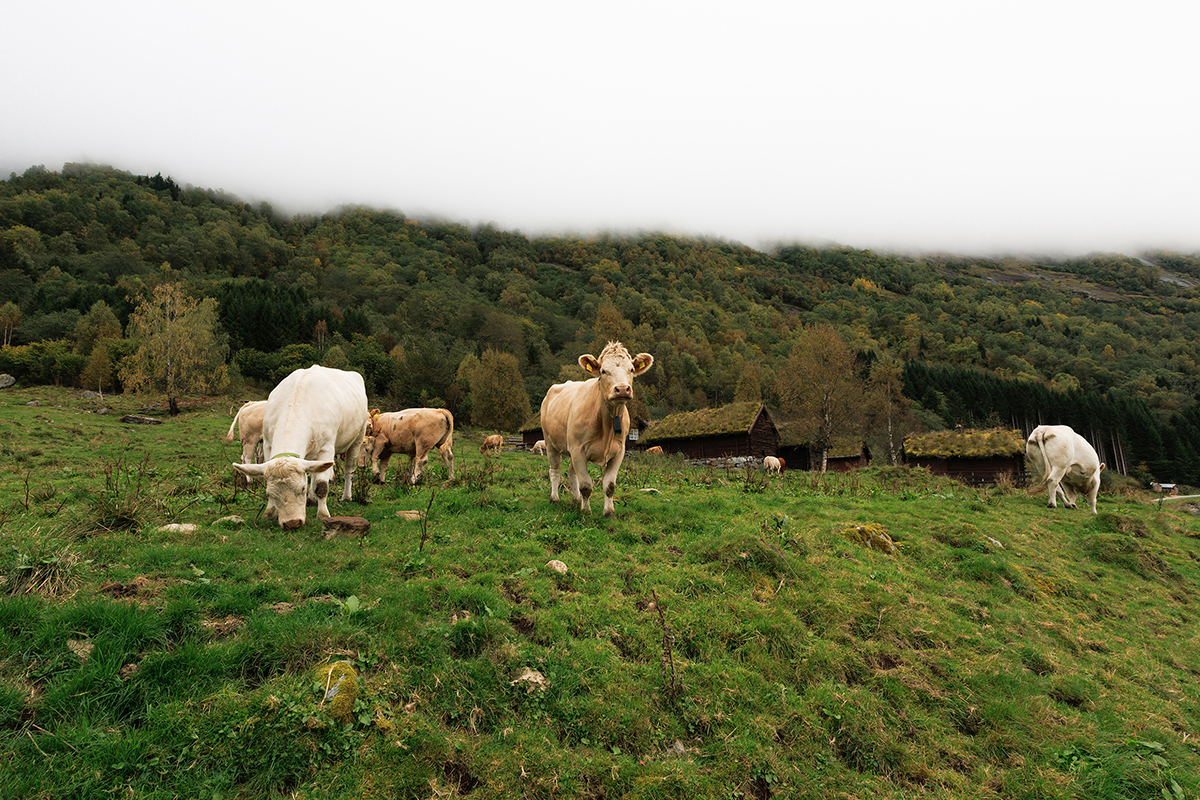
Field Test with the 11-20mm F/2.8 Di III-A RXD for CANON RF Mount
In this first-hand field-test account, photographer Kazuyuki Okajima captures Norway with the Tamron 11-20mm F2.8 (Model B060) for CANON RF
Author & Images: Kazuyuki Okajima
Share Article
In this first-hand field-test account, photographer Kazuyuki Okajima captures Norway with the Tamron 11-20mm F2.8 (Model B060) for CANON RF
Tamron’s first-ever lens designed for Canon RF mounts has finally arrived. Armed with this groundbreaking APS-C mirrorless camera lens, I embarked on my first overseas trip in five and a half years. Escaping the sweltering late summer heat of Japan, I set out for the autumnal beauty of Norway. With a large-aperture ultra-wide-angle zoom lens in hand, I was eager to dynamically capture the breathtaking landscapes.
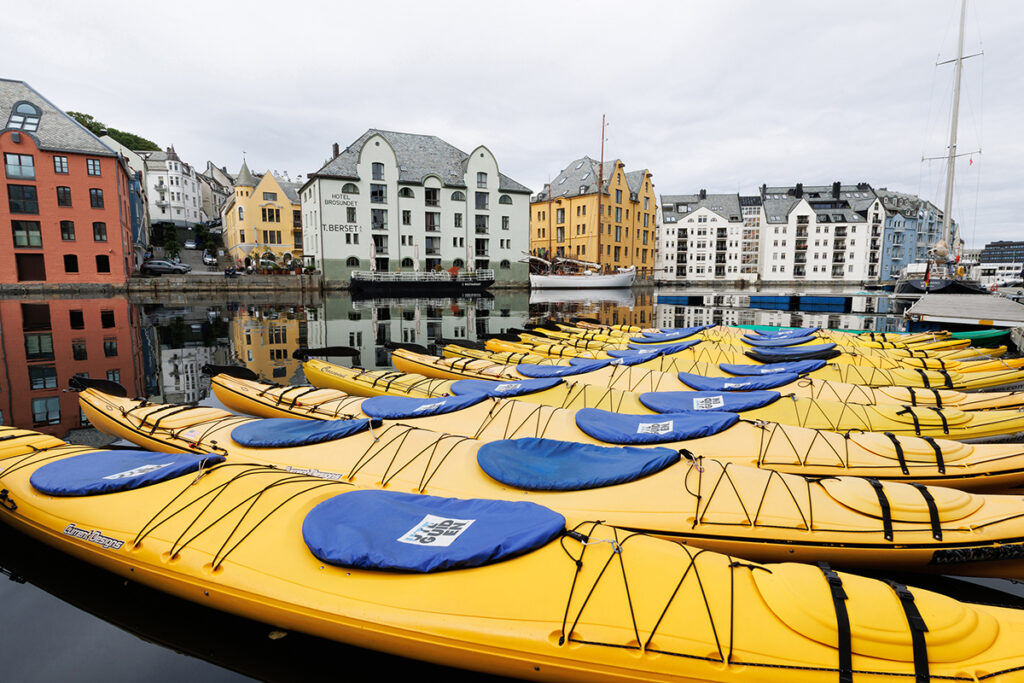
This was my second visit to Norway. On my previous trip, I explored the fjords from Bergen, the country’s second-largest city after the capital, Oslo. This time, I aimed to visit the Geirangerfjord, a UNESCO World Heritage site alongside the Nærøyfjord, which I had seen before. The journey began in the coastal harbor town of Ålesund, nestled among the islands.
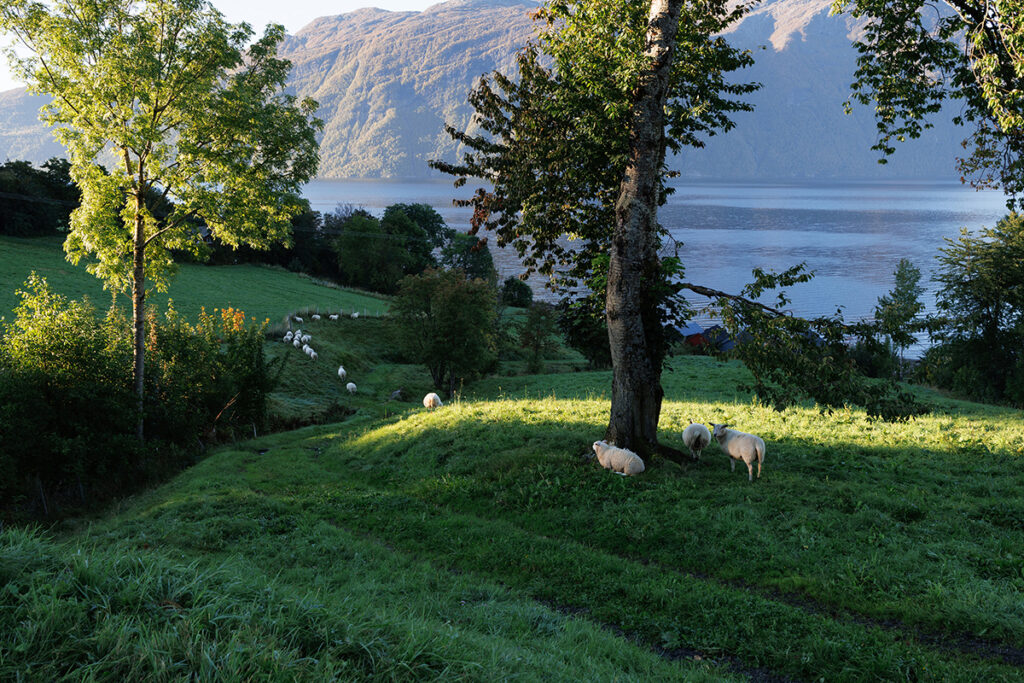
While driving along a fjord-side road, I encountered a flock of grazing sheep. As I stopped the car and approached, they began to move, perhaps sensing my presence. Bathed in the striking morning light, the scene felt vividly lifelike, almost as if viewed with the naked eye. Despite the challenging exposure conditions, I managed to capture the scene authentically, preserving the natural beauty before me.
A Compact and Lightweight Ultra-Wide Zoom Lens for Effortless Travel and Photography
Ålesund, a hub for fjord cruises, buzzes with tourists as large cruise ships dock in the city center. The vibrant Art Nouveau-style buildings are stunning and often invite you to look up as you stroll through the streets. An ultra-wide zoom lens is particularly advantageous for capturing such perspectives effortlessly. The 11-20mm F2.8 stands out for its compact and lightweight design, making it easy to carry while perfectly complementing Canon’s APS-C mirrorless cameras. This combination ensures a seamless balance between travel enjoyment and photography, allowing you to fully immerse yourself in both experiences.
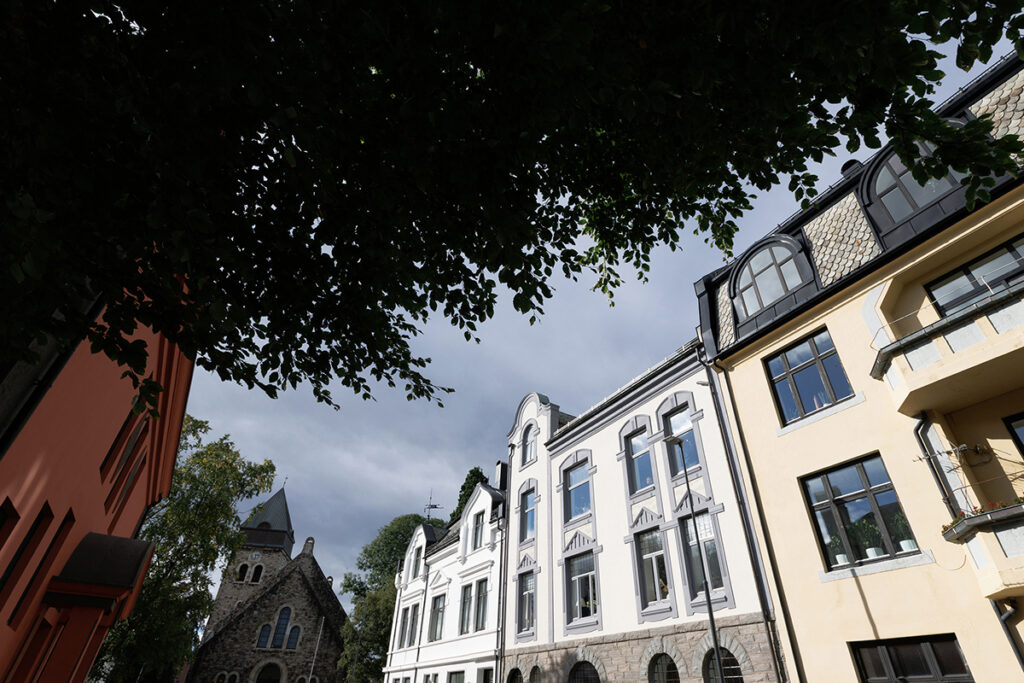
Ålesund’s picturesque streets are a key attraction, and the ultra-wide zoom lens is perfect for capturing the surrounding buildings in a single frame. It excels in creating depth with its enhanced perspective, making it ideal for showcasing the charm of the cityscape. The clear and crisp rendering is one of the standout features of the 11-20mm F2.8 lens. It beautifully preserves the natural impression of the scene, capturing the transparent quality of the light with remarkable authenticity, delivering a highly satisfying result.
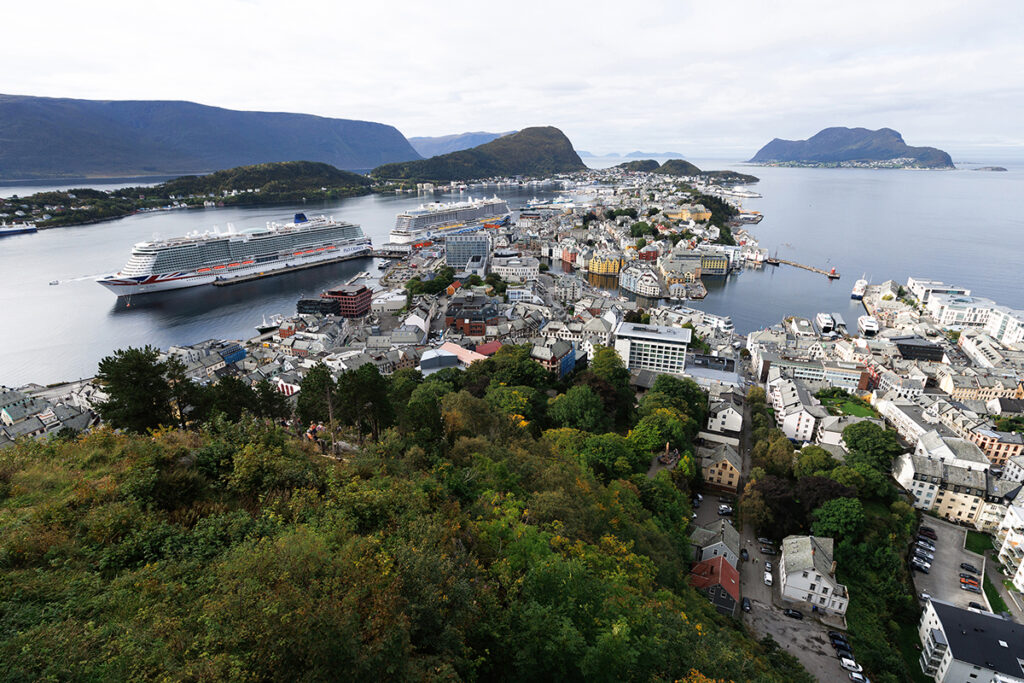
Mount Aksla, Ålesund’s most iconic attraction, rises about 400 meters above sea level and offers a panoramic view of the town and surrounding islands from its observation deck. Climbing the 418 steps to the top was made much easier thanks to the compact and lightweight 11-20mm F2.8 lens. This shot, taken wide open, beautifully captures the expansive scenery, and when compared to a subsequent photo taken at F8, there was virtually no noticeable difference in image quality—showcasing the lens’s impressive performance.
Consistent Image Quality Across the Zoom Range Inspires Creative Motivation
Driving from Ålesund toward the fjords, I stopped whenever an intriguing subject caught my eye and explored small towns on foot with my camera in hand. For this trip, I relied solely on the 11-20mm F2.8, eliminating the hassle of lens changes and the need to deliberate over lens choices. While I often travel with a single prime lens, the ability to seamlessly switch between the wide 17.6mm equivalent and the 32mm telephoto equivalent (in 35mm terms) suited the diverse Norwegian landscapes perfectly. The compact size of this ultra-wide zoom lens, surprising for its category, enhanced my mobility and contributed to a smooth and enjoyable shooting experience.

Even on days with strong contrasts of light and shadow, stepping into the shade reveals a soft, gentle light. While such conditions often result in subdued contrast and saturation, this image avoids dullness, instead achieving a dimensional and clear finish. The flowers in focus are rendered with a soft sharpness that feels natural and tender, complemented by smooth, creamy bokeh in the background. The light in Norway has a unique quality distinct from that of Japan, and this lens captures its atmosphere faithfully and without compromise.

Although I rarely dine out while traveling, a closed supermarket led me to a restaurant during my stroll. Salmon seemed like the obvious choice in Norway! The 11-20mm F2.8’s short minimum focusing distance allowed me to get up close and capture the dish in all its mouthwatering glory. Comparing it with shots taken on a smartphone, this lens delivered a more pronounced sense of texture and freshness, making the dish’s appeal truly come alive.
A Weather-Resistant Lens That Lets You Focus on Shooting with Confidence
In the latter half of the trip, the weather took a turn for the worse, with low-hanging clouds blanketing Geirangerfjord, the highlight of the journey. After hiking for hours along a trail to an 800-meter-high viewpoint, I was met with a sea of clouds rather than the breathtaking panorama I had hoped for. Even in such challenging conditions, the 11-20mm F2.8 delivered impressively satisfying image quality. With its moisture-resistant construction and dirt-repellent coating, this lens proved to be reliable in adverse weather, ensuring high performance regardless of the shooting environment.
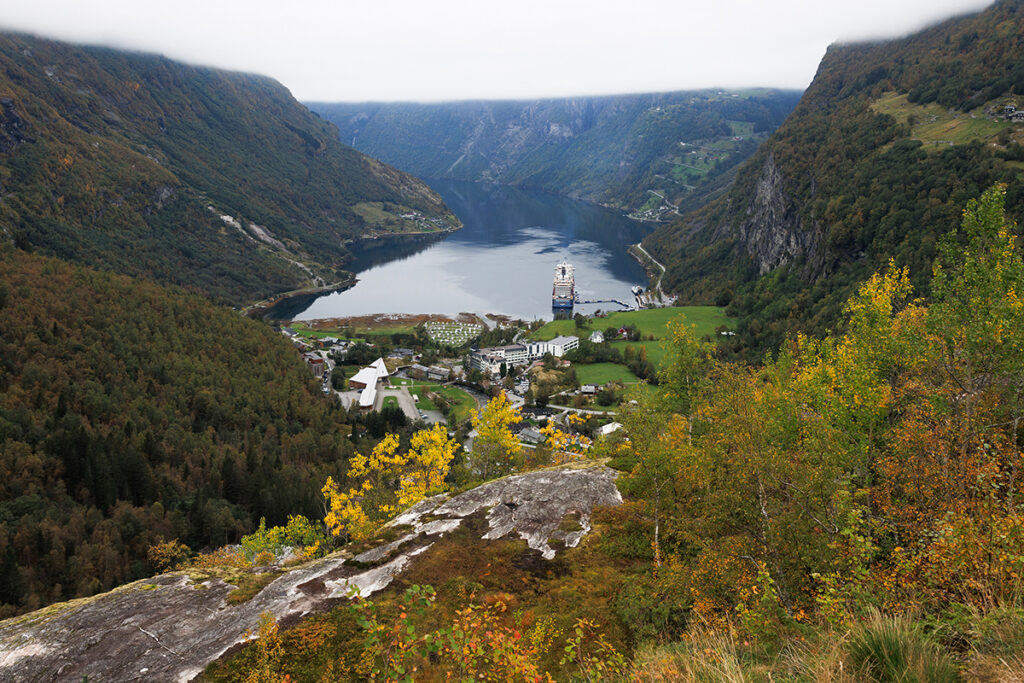
While I hoped to capture this sweeping panorama above, the iconic fjord views framed by 1,500-meter-high peaks remained hidden. Even so, the image avoided becoming dull or flat. The lens effectively captured the soft, diffused light of the overcast weather, delivering sharp image quality with just the right amount of contrast. The various elements within the frame remain distinct, avoiding visual blending, resulting in a composition that conveys depth and dimension.
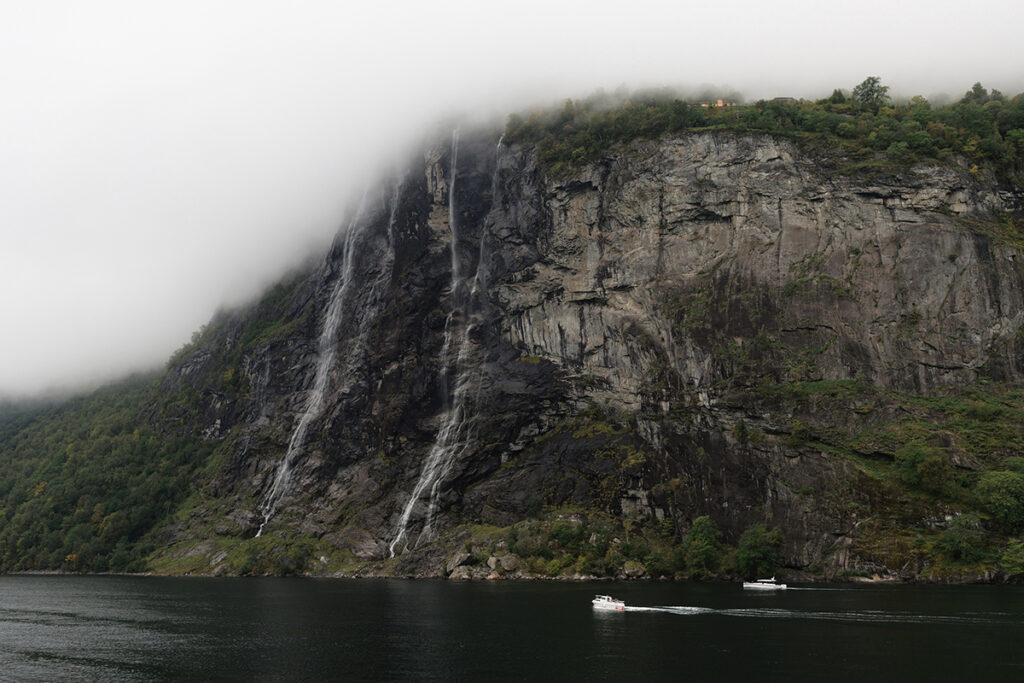
Driving onto a ferry, I embarked on a cruise through Geirangerfjord. One of the highlights was the “Seven Sisters” waterfall. Although the low-hanging clouds muted the sunlight, the lens captured the intricate details of the glacier-carved cliffs with remarkable clarity. The image conveys the dramatic presence and awe-inspiring scale of the fjord, bringing the power and majesty of the scene to life.
A Versatile Companion for Capturing a Wide Range of Expressions
On the return journey to Ålesund, I stopped at fjords, lakes, valleys, and glaciers along the way. Norway’s vast landscapes often tempt you to include everything in the frame, but this can sometimes result in a scattered composition. Effectively combining movement and framing is key to creating dynamic expressions with an ultra-wide zoom lens.
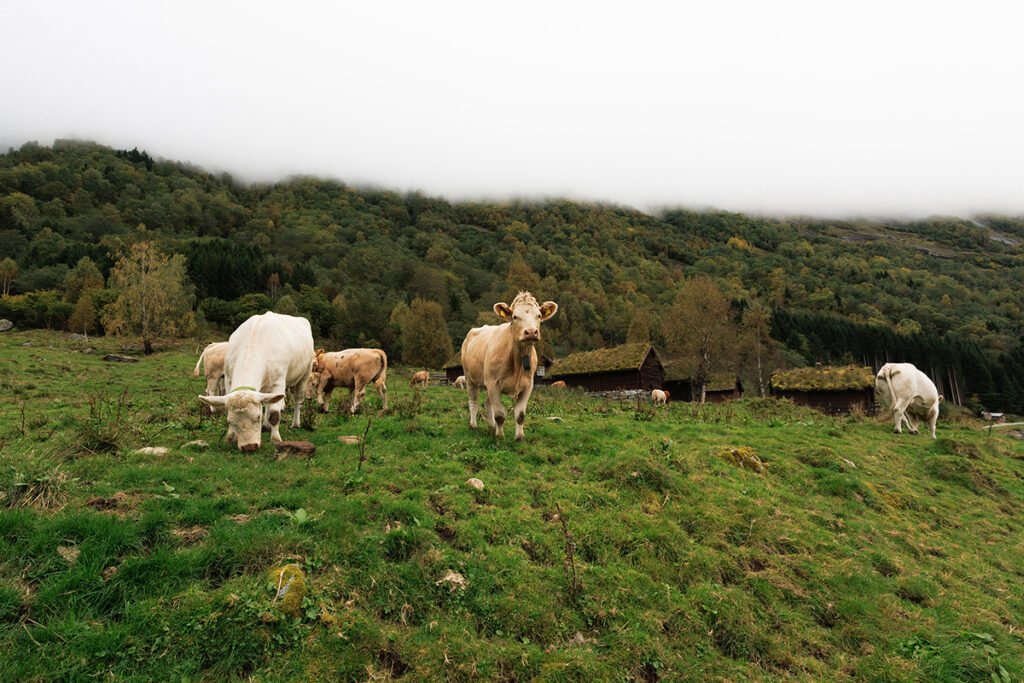
While the 11-20mm F2.8 has a modest 2x zoom range, even a 1mm difference in the wide-angle range significantly alters the field of view compared to standard or telephoto ranges. This makes it easy to experiment with angles and positions, allowing these creative choices to shape the final image. The lens proved to be highly versatile, adapting seamlessly to various subjects and scenes, making it a reliable all-in-one companion for diverse photographic opportunities.
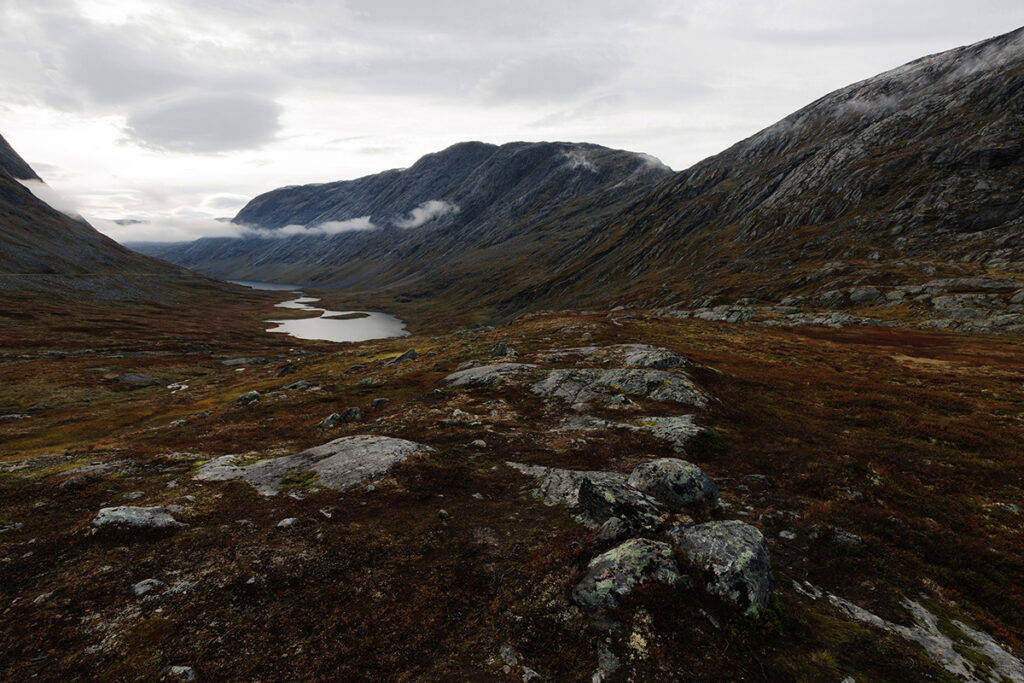
A scenic region shaped by glacial forces, featuring sprawling mountains and lakes. Using the ultra-wide lens’s perspective, I boldly captured the grandeur of this vast landscape. The lens correction function worked effectively, delivering an image of exceptional quality. With remarkable resolution across the entire frame and enhanced depth, the result is an immersive and dynamic representation of the majestic scenery.
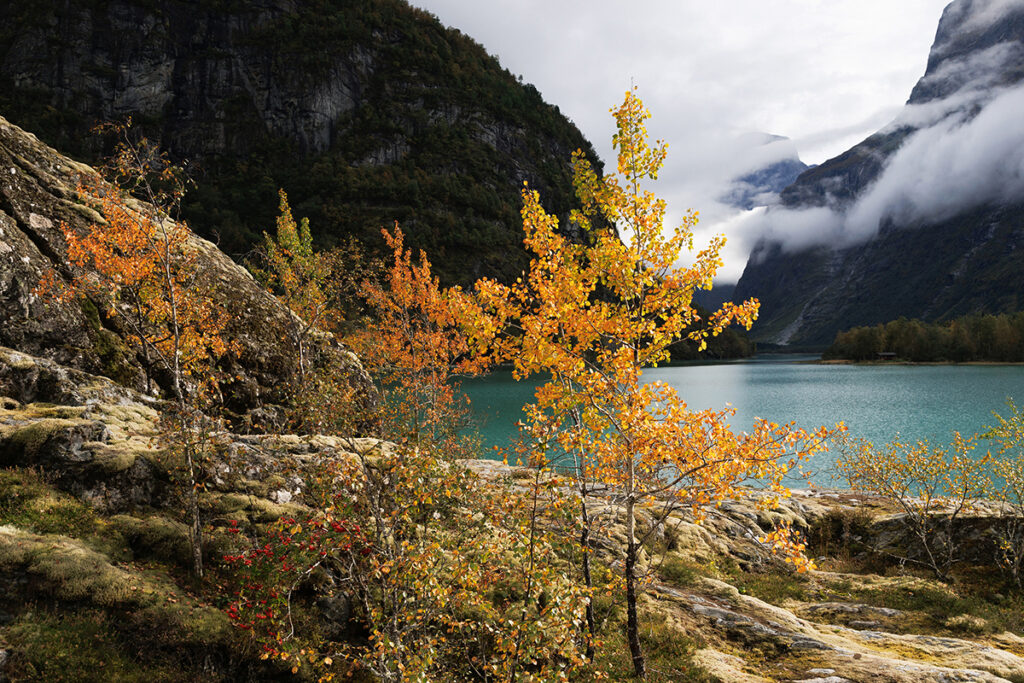
Mid-September brought chilly weather and autumnal landscapes that delighted at every turn. In this lakeside scene, the light streaming in from a diagonal angle illuminated the colorful trees, making them stand out beautifully. Despite the challenging lighting conditions, which could have caused flare or ghosting, the excellent optical performance of the 11-20mm F2.8 lens ensured a clear and sharp image, capturing the scene with remarkable clarity and precision.
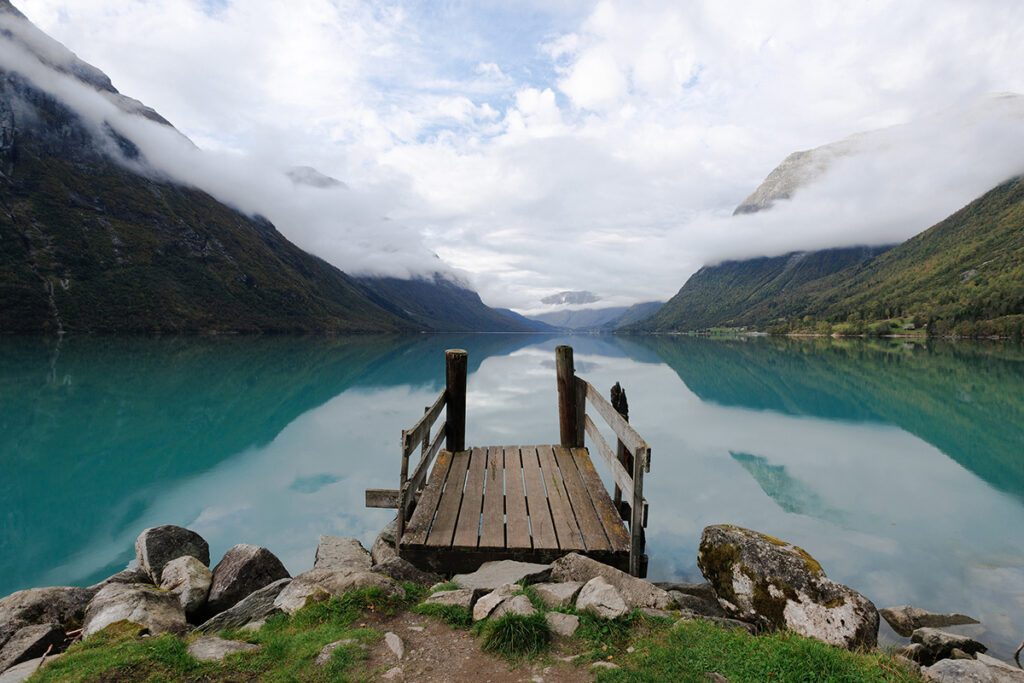
On a hike, I came across an old pier that, though no longer in use, still held a strong presence. It served as a perfect vantage point for enjoying the lake and added a compelling accent to the composition. The ultra-wide perspective of the 11-20mm F2.8 lens was ideal for capturing this expansive scene just as it appeared before me. This resulted in a striking and memorable shot to close out the journey.
My Conclusion
The compact and lightweight design of the 11-20mm F2.8 is a major advantage, especially for a constant F2.8 ultra-wide zoom lens. For this trip, I relied solely on this lens, but it’s clear that combining it with other lenses wouldn’t add much burden to a photography kit. Except for when I was driving, I kept the lens mounted on the EOS R7 and carried it around my neck all day. Despite this, it was entirely stress-free, even during mountain hikes, with minimal fatigue.
The lens’s durability in adverse weather, combined with its portability, allowed me to move freely and increased my opportunities to capture the perfect shot. Its stylish design pairs well with Canon’s APS-C mirrorless cameras, providing an aesthetically pleasing and well-balanced setup.
The handling of the zoom and focus rings was excellent, offering smooth control, and the autofocus was both fast and precise, making it highly adaptable for snap photography. Regardless of the focal length or aperture setting, the lens consistently delivered stable image quality. This reliability let me focus entirely on composing my shots without worrying about technical limitations.
The 11-20mm F2.8 proved to be an ideal travel companion, enhancing the overall experience of my trip to Norway. Its versatility, performance, and ease of use contributed significantly to a highly satisfying photography journey, capturing everything from sweeping landscapes to detailed close-ups with precision and clarity.
Photographer Profile:

Born in Fukuoka City, Fukuoka Prefecture, the photographer graduated from the Tokyo College of Photography. After working as a studio assistant and an assistant to a professional photographer, they became a freelance photographer. They have traveled the world, presenting poetic and evocative works, while also engaging in diverse activities such as seminar lecturing and serving as a judge for photo contests.
Their published works include the book “My Journey with Photography: Creating Works in the Digital Era” and the photo collections “Dingle” and “Wind and Earth,” among many others. They have also held numerous photo exhibitions.
Currently, they contribute to the monthly magazines Digital Camera Magazine and Photo Contest as well as the online platform Digital Camera Watch. They serve as an instructor at Canon EOS Gakuen, Jam Photo School, and Ricoh Photo Academy. A member of the Japan Professional Photographers Society and the Japan Association of Sample Photographers, they are also a Camera Grand Prix selection committee member.
Instagram: @kazuyukiokajima
